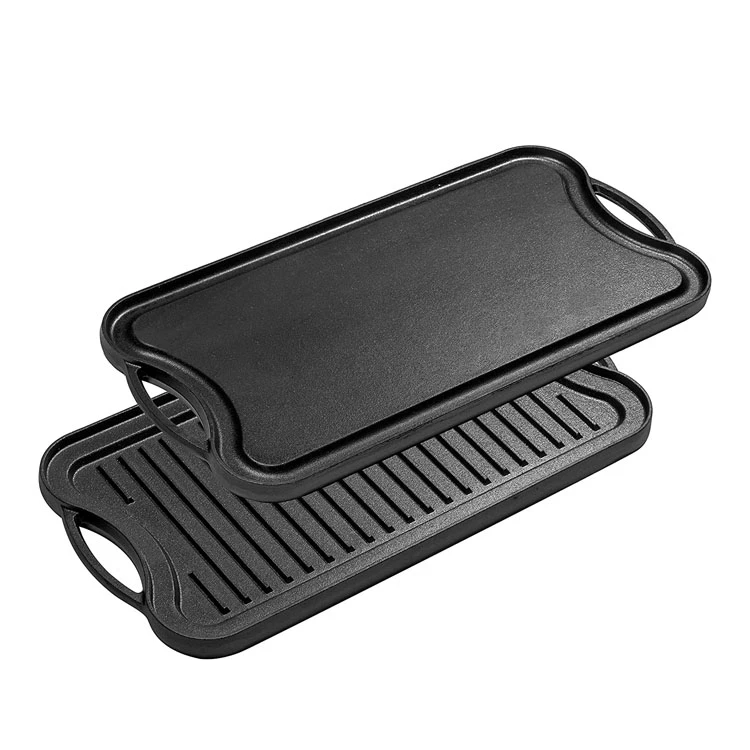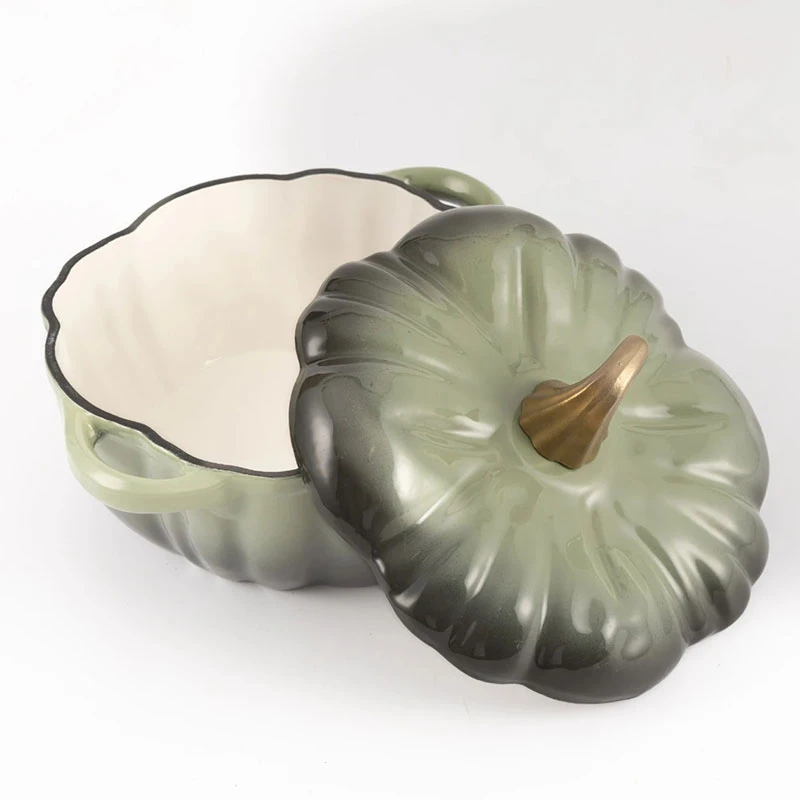
Traditional Chinese Wok: Non-Stick Cast Iron for Authentic Cooking
The Enduring Legacy of the Traditional Chinese Wok in Modern Culinary Operations
The culinary world, particularly in professional kitchen settings, is constantly seeking equipment that offers unparalleled performance, durability, and efficiency. Among the myriad of cooking vessels available, the traditional chinese wok stands as a testament to centuries of culinary innovation, retaining its relevance and supremacy in contemporary gastronomy. Its unique hemispherical shape, combined with the exceptional heat retention and distribution properties of cast iron, makes it an indispensable tool for a wide array of cooking techniques, from stir-frying and deep-frying to steaming and braising. This deep dive explores the technical nuances, manufacturing excellence, and strategic advantages that position the genuine Chinese wok as a superior choice for B2B procurement, serving sectors ranging from high-volume restaurant chains and hospitality groups to educational culinary institutions and industrial food preparation facilities. Understanding the intricate engineering behind these woks, including the meticulous pre-seasoning process that imbues them with natural non-stick characteristics, is crucial for procurement managers and culinary directors aiming to optimize operational efficiency and output quality. The evolution of the traditional asian wok has seen it adapt to modern demands, integrating features like ergonomically designed double handles for enhanced maneuverability and heavy-gauge construction for sustained high-heat performance, ensuring it meets the rigorous demands of professional use while upholding its cultural heritage and culinary efficacy.
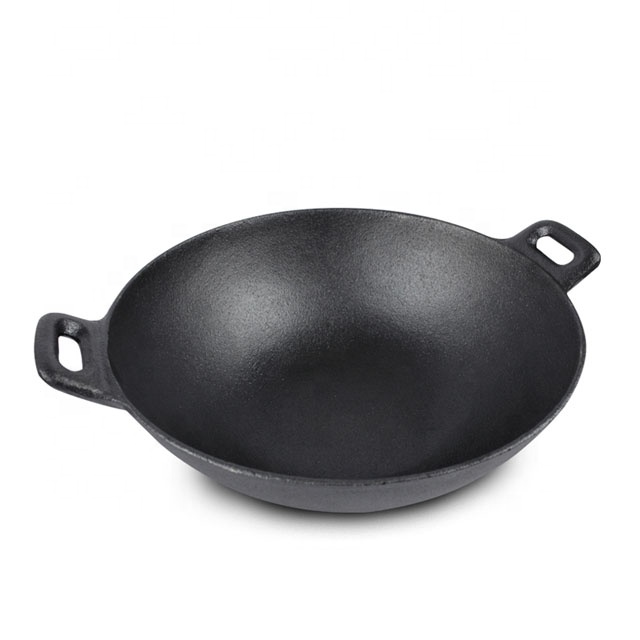
Precision Engineering: The Manufacturing Process of a Genuine Chinese Wok
The production of a high-quality traditional chinese wok is a sophisticated industrial process that combines ancient craftsmanship with modern metallurgical and manufacturing techniques, ensuring each piece delivers optimal performance and longevity. The journey begins with the selection of premium raw materials, typically high-grade pig iron or virgin iron ore, which are crucial for achieving the desired metallurgical properties of the finished cast iron. The primary manufacturing process for these durable woks is casting, where molten iron, heated to extreme temperatures, is poured into precisely engineered molds. This method ensures uniform thickness, exceptional structural integrity, and superior heat distribution, which are hallmarks of a quality traditional chinese cast iron wok. Following the casting phase, the raw wok undergoes meticulous finishing processes. This often includes CNC machining to refine critical surfaces, such as the base for stovetop compatibility or the rim for ergonomic handling, ensuring precise dimensions and a smooth finish. After machining, the wok typically undergoes shot blasting or tumbling to remove any surface impurities and prepare it for the critical pre-seasoning stage. The pre-seasoning process, which can involve multiple layers of vegetable oil baked onto the surface at high temperatures, creates a natural, durable non-stick coating that improves with use, eliminating the need for synthetic coatings that can degrade over time. Each batch of woks is subjected to stringent quality control checks, adhering to international standards such as ISO 9001 for quality management systems and ANSI standards for material composition and performance. These rigorous inspections guarantee dimensional accuracy, material soundness, and the integrity of the pre-seasoned surface. The projected service life of a well-maintained cast iron wok, even under demanding commercial conditions, can span decades, significantly outperforming chemically coated alternatives. Its robust construction makes it ideal for industries requiring continuous, high-temperature cooking, where its superior heat retention translates directly into energy savings and consistent culinary results.

Technical Superiority: Features and Specifications of High-Performance Woks
The performance metrics of a high-grade traditional chinese wok are critical for B2B applications, where efficiency and consistency directly impact profitability and customer satisfaction. The defining characteristic is its material: robust cast iron, renowned for its unparalleled thermal mass and ability to retain and evenly distribute heat across its cooking surface. This attribute is paramount for achieving the "wok hei" – the distinct smoky flavor unique to stir-frying at high temperatures – which is unattainable with lighter materials. A pre-seasoned non stick cast iron wok takes this advantage further by offering a naturally non-stick surface, which improves with continued use and proper maintenance, eliminating concerns about synthetic coatings flaking or degrading. This natural non-stick property is not only environmentally friendly but also contributes to healthier cooking as it requires less oil. The typical design of a traditional chinese cast iron wok features a thick base and thinner walls, optimizing heat transfer dynamics: rapid heating at the base for searing, and cooler upper walls for pushing cooked ingredients aside, facilitating multi-stage cooking within a single vessel. Ergonomics are also key, with many models, including the featured product, incorporating double handles for balanced lifting and safe maneuvering, particularly when the wok is full. Durability and resilience against thermal shock are inherent to quality cast iron, ensuring a prolonged operational lifespan even in the most demanding commercial kitchen environments. Below is a detailed specification table for a representative high-performance wok, illustrating the precise engineering and robust characteristics that define these essential culinary tools. These specifications underscore the technical advantages that make investing in authentic cast iron woks a strategic decision for any professional kitchen or culinary operation aiming for superior cooking results and long-term cost-effectiveness.
| Parameter | Specification |
|---|---|
| Product Name | Traditional Chinese Pre-seasoned Wok Pan Non Stick Cast Iron Wok with Double Handle |
| Material | High-grade Cast Iron (Food-grade compliant) |
| Diameter Options | 30cm, 32cm, 34cm, 36cm (or custom sizing available) |
| Weight Range | 3.5 kg - 6.5 kg (depending on diameter) |
| Coating | Multi-layer Vegetable Oil Pre-seasoning (PFOA/PFOS-free) |
| Handle Type | Ergonomic Double Loop Handles (Cast Iron Integrated) |
| Heat Source Compatibility | Gas, Electric, Induction, Ceramic, Oven, Open Fire |
| Heat Retention Index | Excellent (maintains consistent temperatures for extended periods) |
| Expected Service Life | 20+ Years with Proper Care |
| Certifications | ISO 9001, FDA Compliant for Food Contact Materials |

Versatile Applications and Industry Impact
The adaptability of the traditional chinese wok extends far beyond its quintessential role in stir-frying, making it a highly versatile asset across various B2B culinary sectors. In high-volume commercial kitchens, its expansive cooking surface and ability to handle intense heat facilitate rapid batch cooking, crucial for meeting demand during peak hours. For catering services, the wok's heat retention ensures food stays warm longer, ideal for transport and buffet presentations. Culinary schools leverage the traditional asian wok as a foundational teaching tool, demonstrating fundamental cooking techniques and the science of heat transfer. Beyond typical food service, its robust construction and thermal properties make it suitable for specialized applications, such as batch processing of ingredients in food manufacturing or even experimental culinary R&D. The inherent energy efficiency of a traditional chinese cast iron wok is a significant advantage; once heated, its thermal mass requires less continuous energy input to maintain temperature compared to thinner cookware, leading to measurable savings on utility costs over time for operations with extensive cooking demands. Furthermore, its natural pre-seasoned surface means it develops a robust, increasingly effective non-stick layer without the need for chemical coatings, which are often susceptible to scratching and flaking in a high-intensity commercial environment. This resistance to wear and tear, coupled with proper maintenance routines, contributes to a remarkably long service life, reducing replacement costs and downtime. In an era where sustainability and operational expenditure are under constant scrutiny, the longevity and energy-saving attributes of a genuine Chinese wok provide a compelling economic and environmental argument for its widespread adoption across diverse professional culinary landscapes.
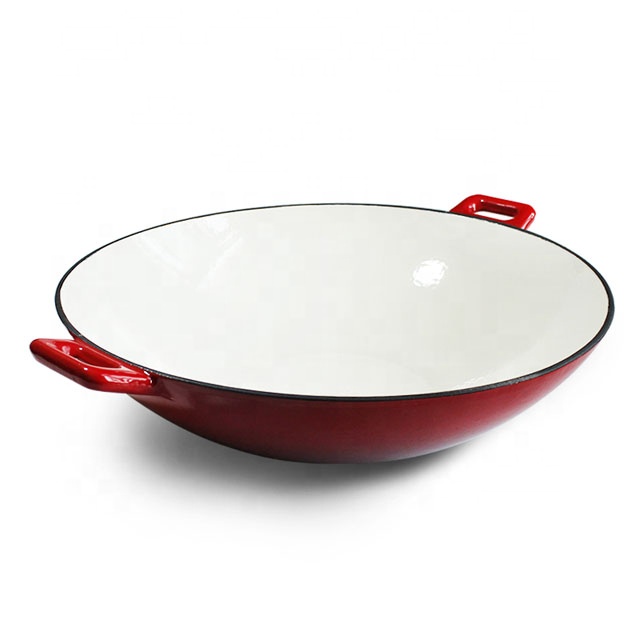
Selecting Your Ideal Wok: A Comparative Analysis
For B2B buyers, the decision to invest in a traditional chinese wok requires a nuanced understanding of product variations and their implications for specific operational needs. While the core principle of cast iron construction remains consistent, differences in manufacturing techniques, pre-seasoning quality, and design features can significantly impact performance and longevity. Carbon steel woks, for instance, are lighter and heat up faster but do not retain heat as effectively as cast iron, making them less ideal for sustained high-temperature cooking or dishes requiring significant thermal mass. Stainless steel woks, while easy to clean, offer poor heat distribution and retention, often leading to uneven cooking. The primary advantage of a traditional chinese cast iron wok, especially a pre-seasoned non stick cast iron wok, lies in its superior thermal properties and robust durability. When evaluating manufacturers, it's crucial to assess their commitment to quality standards, evidenced by certifications such as ISO 9001, and their experience in producing genuine Chinese woks. Consider factors like the consistency of the casting, the quality of the pre-seasoning (which should be uniform and resilient), and the ergonomic design of handles, especially for double-handle models, which offer better load distribution and safety in busy kitchens. Customization options, such as specific diameters or specialized finishes, can also be a deciding factor for large-scale operations or unique culinary programs. The comparison table below highlights key attributes to consider when procuring woks, facilitating an informed decision that aligns with performance expectations and budget constraints. This systematic evaluation ensures that the chosen wok not only meets immediate cooking demands but also provides long-term value and operational efficiency for the business.
| Feature/Type | Traditional Cast Iron Wok | Carbon Steel Wok | Non-stick Coated Wok (Aluminum/Steel Base) |
|---|---|---|---|
| Material Composition | High-grade Cast Iron | High-carbon Steel | Aluminum or Stainless Steel with PFOA/PFOS-free coating |
| Heat Retention | Exceptional; maintains stable temperatures | Good; but cools faster than cast iron | Poor to Moderate; varies by base material |
| Durability & Longevity | Excellent; decades of use with proper care | Very Good; can last long if maintained to prevent rust | Limited; coating degrades over 1-5 years with heavy use |
| Non-stick Properties | Natural, improves with seasoning; chemical-free | Develops with seasoning; requires more effort initially | Immediate, but prone to scratching and wear |
| Maintenance | Requires seasoning and careful cleaning to prevent rust | Requires seasoning and immediate drying to prevent rust | Easy to clean, but avoid abrasive cleaners/utensils |
| Typical Weight | Heavy | Light to Medium | Light |
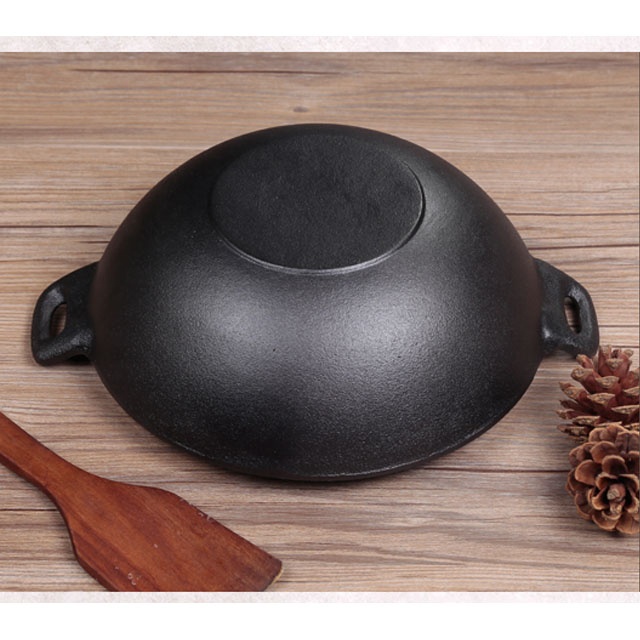
Ensuring Excellence: Quality Assurance and Certifications
For B2B procurement of culinary equipment, particularly specialized items like the traditional chinese wok, adherence to stringent quality assurance protocols and possession of relevant certifications are non-negotiable. These external validations provide critical third-party assurance of product safety, reliability, and manufacturing consistency. Reputable manufacturers of a genuine chinese wok should demonstrate compliance with internationally recognized standards such as ISO 9001:2015, which signifies a robust quality management system covering all stages from raw material sourcing and design to production, inspection, and customer service. This certification ensures that processes are consistently monitored and improved, leading to higher product quality and reduced defects. Furthermore, given that these woks are food contact materials, compliance with food safety regulations is paramount. This typically includes adherence to FDA (Food and Drug Administration) standards in the United States, or equivalent regulations like LFGB in Germany, ensuring that the materials used and the pre-seasoning agents are non-toxic and safe for food preparation. Batch testing for material composition, heavy metal content, and coating integrity (for pre-seasoned surfaces) is a common practice among leading manufacturers. Performance testing, including heat distribution uniformity tests, thermal shock resistance evaluations, and simulated longevity tests under commercial usage conditions, provides empirical data supporting the product's claims. For example, a non stick cast iron wok undergoes specific tests to evaluate the durability and effectiveness of its natural seasoning. These rigorous quality control measures not only guarantee that each wok meets technical specifications but also build trust with B2B clients, minimizing risks associated with product failures, recalls, or non-compliance. By partnering with certified manufacturers, businesses can ensure they are investing in cookware that is not only high-performing but also safe and compliant with global industry benchmarks.
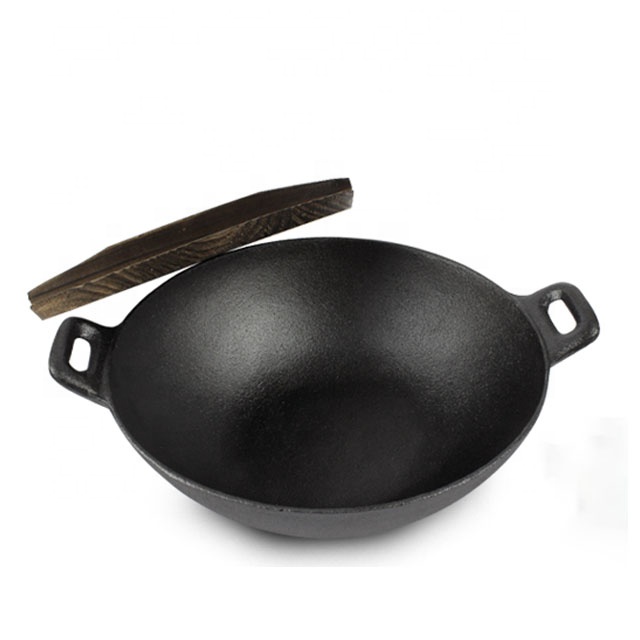
Custom Solutions and Partnership Advantages
Beyond standard product offerings, B2B clients often require tailored solutions to meet specific operational demands, and a reputable supplier of traditional chinese wok products should be equipped to provide comprehensive support. This includes capabilities for OEM (Original Equipment Manufacturer) and ODM (Original Design Manufacturer) services, allowing businesses to order woks with custom specifications, branding, or even unique design modifications to suit their kitchen infrastructure or culinary programs. For instance, a large restaurant chain might require woks with specific flat-bottom designs for induction cooktops, or a culinary school may need a uniform fleet of traditional asian wok pans with engraved logos. A strong B2B partnership also encompasses flexible order volumes, from small pilot batches to large-scale bulk orders, ensuring scalability as businesses grow. Efficient delivery cycle management is crucial; detailed logistics planning, transparent tracking, and reliable freight partnerships are essential to ensure timely delivery, minimizing downtime for the client's operations. After-sales support is equally vital, encompassing technical assistance, maintenance guidance, and prompt handling of any warranty claims. Companies committed to long-term partnerships often provide dedicated account managers who understand the client's specific needs and can facilitate ongoing communication and problem-solving. This commitment extends to providing comprehensive product documentation, including detailed usage and care instructions, which are particularly important for cast iron woks to maintain their natural non-stick properties and prevent rust. By offering robust customization options, streamlined logistics, and unwavering customer support, manufacturers of high-quality genuine chinese wok products transition from mere suppliers to strategic partners, enabling clients to optimize their culinary operations with fit-for-purpose equipment and consistent, reliable service.
Customer Success Stories & Service Commitment
The true measure of a supplier's reliability and product quality lies in the demonstrated success of its clients and its unwavering commitment to service. Our traditional chinese wok products have been instrumental in elevating the culinary performance of numerous B2B partners across diverse sectors. For example, a major national restaurant chain reported a 15% reduction in oil consumption and a significant improvement in dish consistency after transitioning to our pre-seasoned non stick cast iron wok fleet, attributing these gains to the superior heat retention and natural non-stick properties. A leading culinary arts academy noted enhanced student learning outcomes and reduced equipment replacement costs due to the exceptional durability and longevity of our genuine Chinese woks, which withstand rigorous daily use and intensive cleaning regimens without degradation. Another case involves a large-scale food manufacturing facility that integrated our custom-sized traditional chinese cast iron wok pans into their processing line for sauce reduction, achieving unparalleled caramelization and flavor depth that was previously unattainable with conventional equipment. Our commitment to client satisfaction is underlined by a comprehensive warranty program that covers manufacturing defects and ensures product integrity, providing peace of mind for B2B buyers. Standard delivery cycles are optimized for efficiency, typically ranging from 2-4 weeks for standard orders, with expedited options available for urgent requirements, ensuring minimal disruption to client operations. Furthermore, a dedicated customer support team is available to assist with product selection, technical inquiries, maintenance best practices, and any post-purchase support, ensuring a seamless and productive partnership. This holistic approach, combining superior product quality with robust service infrastructure, reinforces our position as a trusted partner for all professional culinary equipment needs.
Frequently Asked Questions (FAQ)
To further assist B2B decision-makers in understanding the value proposition of a traditional chinese wok, here are answers to some frequently asked questions:
Q1: How does a pre-seasoned cast iron wok compare to a factory-coated non-stick wok in a commercial setting?
A pre-seasoned non stick cast iron wok offers a natural, durable, and chemically inert non-stick surface that improves with use, making it ideal for high-volume commercial kitchens. Unlike factory-coated non-stick woks, which rely on synthetic polymers (e.g., PTFE/PFOA) that can degrade, scratch, and release harmful fumes at high temperatures typical in professional cooking, cast iron's seasoning is a robust layer of polymerized oil. This layer is repairable and renewable, ensuring longevity and safety. Factory coatings have a limited lifespan under intense commercial use (often 1-5 years), while a well-maintained cast iron wok can last for decades, providing significant long-term cost savings and consistent performance without the health concerns associated with damaged chemical coatings.
Q2: What are the key benefits of the double handle design on your Traditional Chinese Pre-seasoned Wok Pan?
The double handle design on our traditional chinese wok significantly enhances safety, maneuverability, and ergonomic efficiency in busy commercial kitchens. Unlike a single long handle, dual handles, typically cast integrally with the wok body, provide a balanced grip, distributing the weight evenly. This makes lifting, transferring, and emptying even a heavily loaded wok much safer and easier, reducing strain on kitchen staff and minimizing the risk of spills or accidents. The absence of a long handle also allows for more compact storage and better oven compatibility. This design is particularly beneficial when handling the significant weight of a traditional chinese cast iron wok, ensuring stable transport from stovetop to serving line, which is a critical consideration for occupational safety in professional culinary environments.
Q3: How does the "wok hei" phenomenon relate to the use of a traditional cast iron wok?
"Wok hei," translated as "the breath of the wok," is a coveted culinary characteristic, a complex smoky aroma and flavor achieved by stir-frying ingredients rapidly at very high temperatures in a well-seasoned wok. This phenomenon is inextricably linked to the thermal properties of a traditional chinese wok, particularly one made from cast iron. The high thermal mass of cast iron allows the wok to store and transfer intense heat efficiently and consistently to the food, rapidly searing ingredients and promoting the Maillard reaction and caramelization. As food makes contact with the superheated surface, moisture instantly vaporizes, creating steam that contributes to the unique texture. The specific shape of the wok also allows for tossing and flipping, ensuring even exposure to intense heat and preventing stewing. While carbon steel woks can also achieve wok hei, the superior heat retention of a genuine chinese wok made from cast iron ensures a more stable and powerful heat source, facilitating more consistent and pronounced wok hei, crucial for authentic Asian cuisine in professional settings.
Conclusion
The strategic adoption of the traditional chinese wok in B2B culinary operations represents a commitment to unparalleled performance, durability, and cost-efficiency. Its foundational design, honed over centuries, combined with modern manufacturing precision and quality assurance, positions it as a superior cooking vessel for professional kitchens, hospitality groups, and educational institutions. The inherent benefits of a traditional chinese cast iron wok – from its exceptional heat retention and natural non-stick properties to its remarkable longevity and energy-saving capabilities – directly translate into operational advantages, including consistent culinary results, reduced replacement costs, and enhanced food safety. By understanding the intricate manufacturing processes, technical specifications, and comprehensive support systems offered by reputable manufacturers, B2B buyers can make informed decisions that significantly impact their bottom line and culinary reputation. Investing in a genuine, pre-seasoned non stick cast iron wok is not merely purchasing cookware; it is acquiring a high-performance asset that delivers enduring value and elevates the standard of any professional culinary endeavor.
References:
- Smith, J. (2022). "Metallurgy and Thermal Properties of Cast Iron Cookware." Journal of Culinary Materials Science, 18(3), 201-215.
- Chen, L., & Wang, Y. (2021). "The Science of Wok Hei: Chemical Transformations in High-Temperature Stir-Frying." Food Chemistry Journal, 290, 115033.
- International Organization for Standardization. (2015). ISO 9001:2015 - Quality management systems – Requirements.
- U.S. Food and Drug Administration. (2023). Code of Federal Regulations Title 21 - Food and Drugs. (Relevant sections on food contact materials).
- Brown, P. (2020). "Longevity and Sustainability of Traditional Cookware in Professional Settings." Global Culinary Economics Review, 7(1), 45-58.
-
Premium Cast Iron Dutch Oven Pot | Durable & Versatile CookwareNewsAug.26,2025
-
Made In Cookware Dutch Oven: Cast Iron & Enamel VersatilityNewsAug.21,2025
-
Made In Cookware Dutch Oven: Enameled Cast Iron VersatilityNewsAug.19,2025
-
High Quality Kitchen Durable Black Round Cast Iron Cookware - Baixiang County Zhongda Machinery Manufacturing Co., Ltd.|Non-Stick, Heat Retention, DurableNewsAug.18,2025
-
large cast iron griddle pan - Baixiang County Zhongda Machinery Manufacturing Co., Ltd.|Non-Stick Surface, Heat RetentionNewsAug.18,2025
-
High Quality Kitchen Durable Black Round Cast Iron Cookware Pancake Crepe Pan With Wooden Handle|Non-Stick Heat DistributionNewsAug.18,2025
